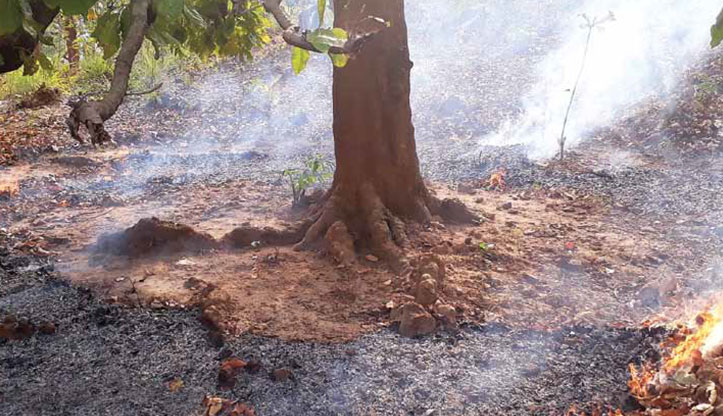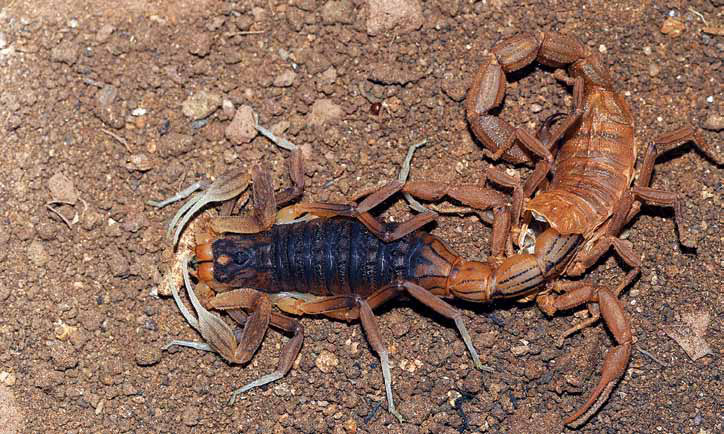
A Decade of Successful Sarus Conservation with Community Participation
By Dr. Sangeeta Rajgir, Mohd. Khalique
The Sarus crane (Grus antigone) is the tallest flying bird in the world standing 152-156 cm tall with a wingspan of 240 cm. It has a predominantly grey plumage with a naked red head and upper neck and pale red legs. It weighs 6.8-7.8 Kgs. It is a social creature, found mostly in pairs or small groups of three or four, known to mate for life with a single partner, its breeding season coincides with heavy rainfall in monsoon. Nests are constructed on water in natural wetlands or in flooded paddy fields. Usually, a clutch has only one or two eggs, which are incubated by both parents for a period of 26 to 35 days. The juveniles follow their parents from the day of birth. The highest number of this bird in the whole world is found in India. The Sarus Crane found in India is permanent migrant.
The Sarus Crane also has its own distinct cultural significance. The credit for the first poem of Ramayana, the world’s first book, goes to the Sarus Crane. In the binomial classification of Linus, it is called Grus Antigone. This member of the class Guiiformes is covered with whitish-grey colored fur. There is no such distinguishing difference between males and females, but females in pairs can be easily identified due to the male’s relatively small body. A total of eight species are found all over the world, four of them are found in India. The fifth Siberian crane became extinct in India in 2002.
The total number of Sarus crane in India ranges from about 8,000 to 10,000. Their main habitat is marshy land, flood plain, pond, lake, fallow land and mainly paddy fields etc. They mainly live-in numbers from 2 to hundreds. They prefer to build their nests in the vicinity of shallow water where there is abundance of green plants (mainly shrubs and grasses). They are mainly herbivores and feed on tubers, seeds and cereal grains. Sometimes they also eat some small invertebrates.
Conservation Issues
The main threat to the Sarus crane in India is habitat loss and degradation due to draining the wetland and conversion of land for agriculture. The landscape of its historic range is rapidly changing due to construction of highways, housing colonies, roads, and railway lines. More recently, many deaths have been recorded due to collision with power lines. Also, due to the increase in agricultural land, Sarus cranes are left with no choice but to forage in these fields, and as a result ingest pesticides, which lead to poisoning.
 Sarus Crane Conservation in Bhopal
Sarus Crane Conservation in Bhopal
Once seen in hundreds, the Sarus Crane population drastically declined from Bhoj Wetland and nearby periphery. As per reports around 160 individuals were counted in 2001 depleting to 24 and 10 in 2008 and 2014 respectively. Alarmed by such drastic decline, NGO Wildlife Trust of India that work for wildlife protection along with our organization that is Bhopal birds started rapid action project to save these birds.
How Sarus Conservation started…
It started with saving an injured young crane in Bishankhedi village. Village resident Shri Sunil Srivastava saved this Sarus Crane, after taking initial care informed the members of Bhopal Birds, who often used to go through his fields to moniter the cranes in the lake. The members of the organization immediately went to the village to know the whole situation and informed the forest department.
Inspired by this incident, the organization started collecting information from the villagers about sarus such as understanding of the community about Sarus, their past and present potential habitats and threats etc.
It was decided by the organization to make the villagers aware and sensitive about the cranes. In this work, we were assisted by ‘Wildlife Trust of India’
In collaboration with WTI (Wildlife Trust of India), Bhopal Birds organized awareness programs for the villagers in ten villages situated on the periphery of bhoj wetland as, Goragaon, Bishankhedi, Barkheda, Bilkheda, Mughalia Chhap, Etkhedi Chhap, Bamhori, Kajilas, Lakhapur etc. various reading material were distributed, efforts were made to reduce the threats by making the villagers aware of the threats on cranes. In this sequence, a group of rural youth ‘Sarus Mitra’ were formed, which became a volunteer and continuously monitored the Sarus Cranes, their eggs and juveniles. These Sarus Mitra themselves or along with the members of Bhopal Birds used to collect data by monitoring cranes at all places like ponds, villages, fields and help to protect them from various threats that effect Sarus Cranes, they used to monitor the cranes daily along with their daily work and forward collected data to the organization. Gradually, cranes settled in the safe environment provided by the villagers and their number started to flourish.
As one of the biggest killers, which was discovered early on was uncontrolled use of pesticides by farmers especially on their vegetable crops that the birds feed on as then told by Debobrato Sircar of WTI, Wild Aid Division. So, there was an immediate need of mitigation by starting the practice of Organic Farming. The Agricultural Scientists from Krishi Vigyan Kendra and other agricultural research organizations were roped into speak to the farmers and members of local communities on the adverse effect of chemical fertilizers on human health
and hence linked the same with Sarus Cranes too that it would be beneficial for both of us. The initiative of organic farming by the villagers proved to be a milestone in the initiative. As a result of these protective measures, the number of cranes became visible and their eggs and young were also marked. Sarus crane became the centre of attraction for citizens, students and researchers of the urban area.Sarus biodiversity center was established by Bhopal Birds organization, in which discussions and awareness camps were organized for the villagers and people of the city. In these awareness camps, ideas were exchanged, and the conservation plans were made and executed with the help of villagers.
The local communities around Bhoj wetland worship the Cranes, and so would not harm them anyway but over the years due to overgrazing, fishing, desiltation, pesticide use and pollution the numbers were going down rapidly
Year after year the group of Sarus Cranes increased. Programs like counting of various birds coming to Bhojtal, cleaning of Bhojtal, plantation and weed eradication, Biodiversity data collection of Bhojtal etc. These activities helped in reducing the threats of cranes and also inspired the local public for conservation of birds.

 As a result of all these activities, there has been a significant increase in the number of cranes flocks and their small chicks can also be seen nearby the lake. Some pairs were fearless and make nests and lay eggs every year in the farmer’s fields. In the year 2019, their number popped up to 330
As a result of all these activities, there has been a significant increase in the number of cranes flocks and their small chicks can also be seen nearby the lake. Some pairs were fearless and make nests and lay eggs every year in the farmer’s fields. In the year 2019, their number popped up to 330
Our organisation is taking the work of conservation further for better planning of conservation strategies. In that process we are writing letters to concerned authorities to make more effective conservation plans for Sarus Cranes and other Avian diversity of Bhoj wetland.
About Bhopal Birds
Bhopal birds conservation Society is a conservation based NGO founded in year 2006 & registered under the society registration act (M.P).
The primary focus of the organisation is to conserve nature, wild life, natural resources and sustainable livelihood for an improved environment. Organisation considered birds as entry points for the conservation of wider natural resources, as they act as key indicator of status and health of ecosystem . Bhopal Birds Conservation Society has a long experience in scientific (mainly Avifauna & biodiversity ) education and awareness, community livelihood & conservation efforts. The mission of the organization includes Protecting nature, birds & biodiversity, raising awareness on environmental issues, Conservation & protection of natural habitats of birds & wildlife, works on sound science & passionate commitment for conservation of nature, focused on conservation of rare & endangered species, Fight against illegal wildlife trade.
Various remarkable works are being done by the organization during the successful 15 years, including state level (for children) nature awareness shipper, guide training program for the local community of national parks and sanctuaries, Gauraiya Mitra program (details of artificial nest for sparrows), Saras Mitra Program (local community awareness campaign for stork conservation), publication of various booklets on birds for awareness and conservation, publication of research papers in national and international publications, bird census of Bhoj Wetland (Ramsar Site), cleaning campaign, tree plantations etc. The efforts made by the organization for the conservation of cranes were appreciated in the COP-13 organized in Gandhinagar (Gujarat) in the year 2020 in which 130 countries participated.
Continuous efforts are also being made for wildlife conservation. All these works of the institution were cooperated by the Government of India, State Government, National and International, Government and Non-Government organizations. We specially thank MP Forest Department, Wildlife Trust of India, MP State Biodiversity Board, Regional Museum of Natural History Bhopal and VNS Nature Saviours
Compiled By Vikas Singh Baghel




